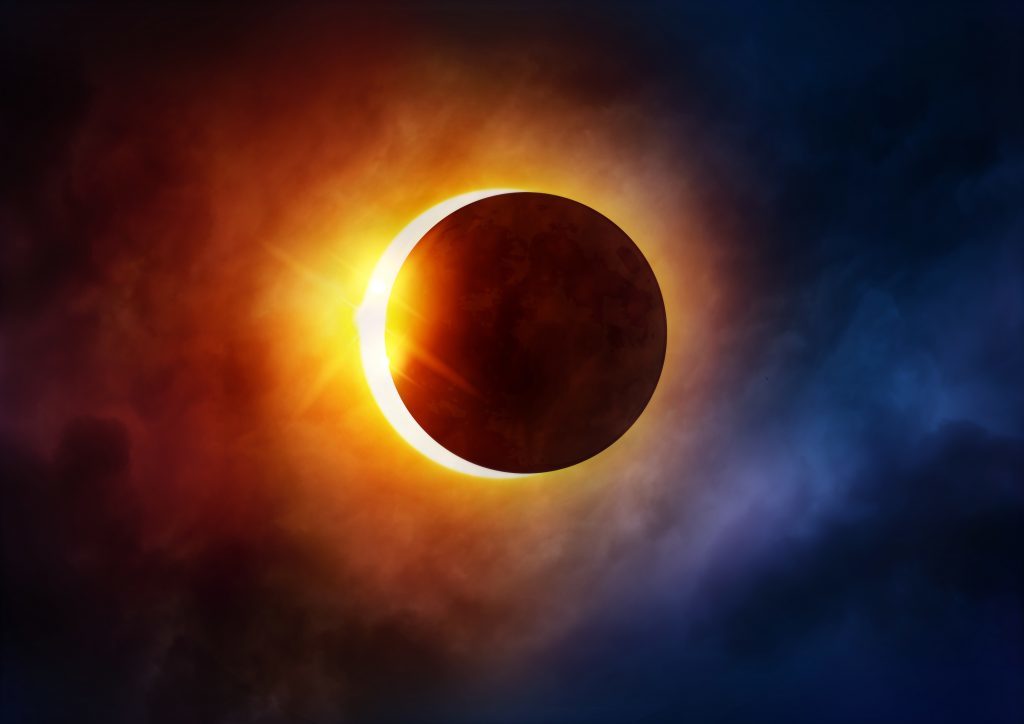
Gloomy skies are set to stop Britons seeing a partial solar eclipse on Monday evening, forecasters have warned.
Just before sunset the moon will appear to take a “bite” out of the sun in a phenomenon lasting roughly 40 minutes.
The mid-point will occur at different times around the UK, but overcast weather is likely to obscure the spectacle for most, the Met Office said.
Renewable firms have been gearing up for a dip in power from solar farms as a result.
The movement of the moon between the Earth and sun will produce a much more dramatic event in the US, where a total eclipse will turn day to night for two minutes.
On British shores, only south-west England and South Wales are expected to have any chance of witnessing the moment through a break in the cloud.
Met Office forecaster Martin Bowles said: “It doesn’t look very promising.
“It is only going to be about 4% of the sun which will be blotted out, so even if it is perfect weather conditions you won’t see a lot.
“From a meteorological point of view it is not looking very good because of the cloud – most people won’t be able to see a thing.
“There will be some breaks in the cloud in the south-west of the country – South Wales and south-west England – there will be enough breaks that people who are looking specifically might be able to see a little chip out of the corner of the sun.
“Anywhere in the east, including London, won’t see anything because it will just be clouded over; also Scotland and Northern Ireland.”
Due to the partial eclipse occurring near sunset, there is unlikely to be an observable reduction in light, he added.
For observers in Edinburgh, the peak of the eclipse is due to be at 7.58pm and for those in Cardiff at 8.05pm.
Millions of Americans are gathering along a stretch from Oregon to South Carolina to watch the spectacle – the first total solar eclipse to sweep coast to coast across the US in 99 years.
Southern-most Illinois will have the longest period of darkness at two minutes and 44 seconds.
It is expected to be the most observed and most photographed eclipse in history.
Up to five solar eclipses occur each year, but each one is visible only within a limited band across the Earth’s surface where the moon’s shadow happens to fall.
The Royal Astronomical Society warned anyone hoping to catch the phenomenon not to look directly at the sun.